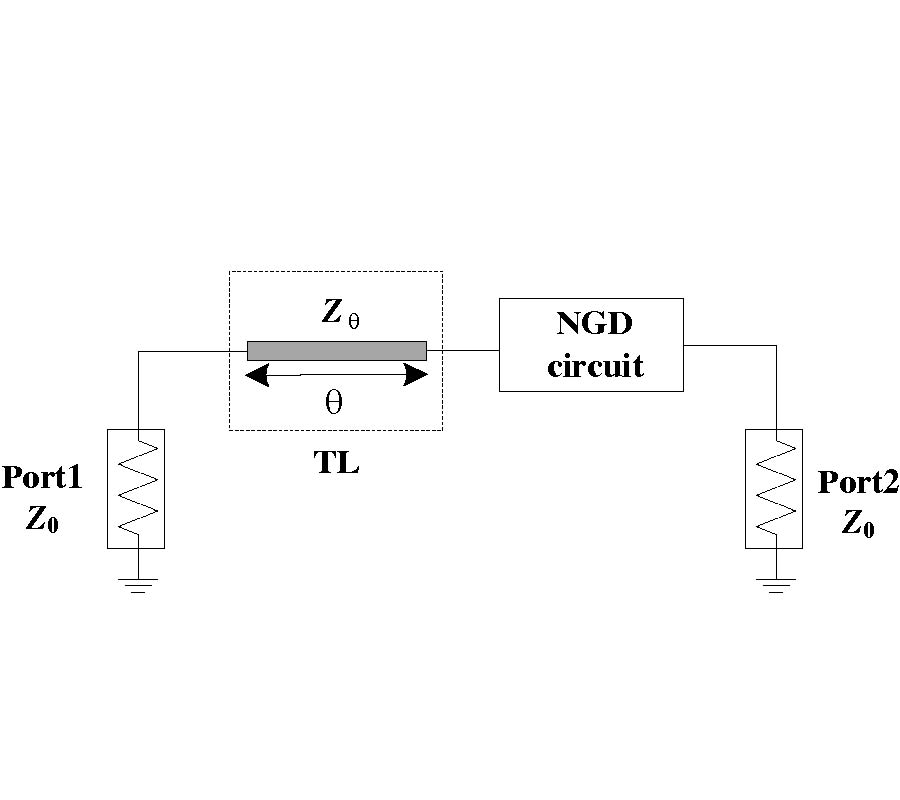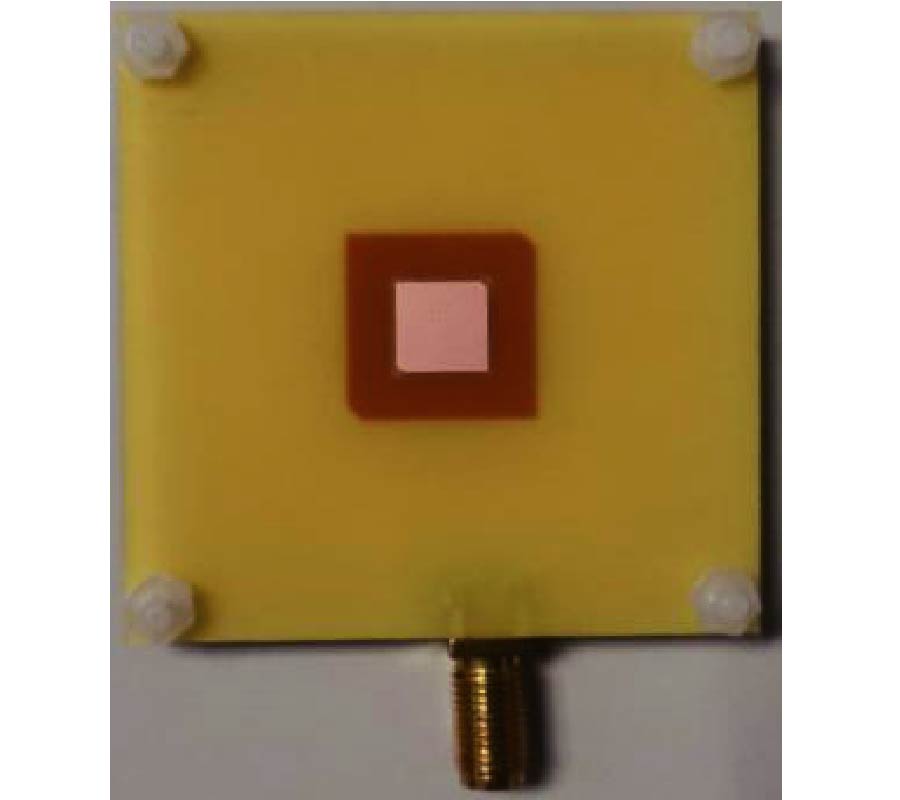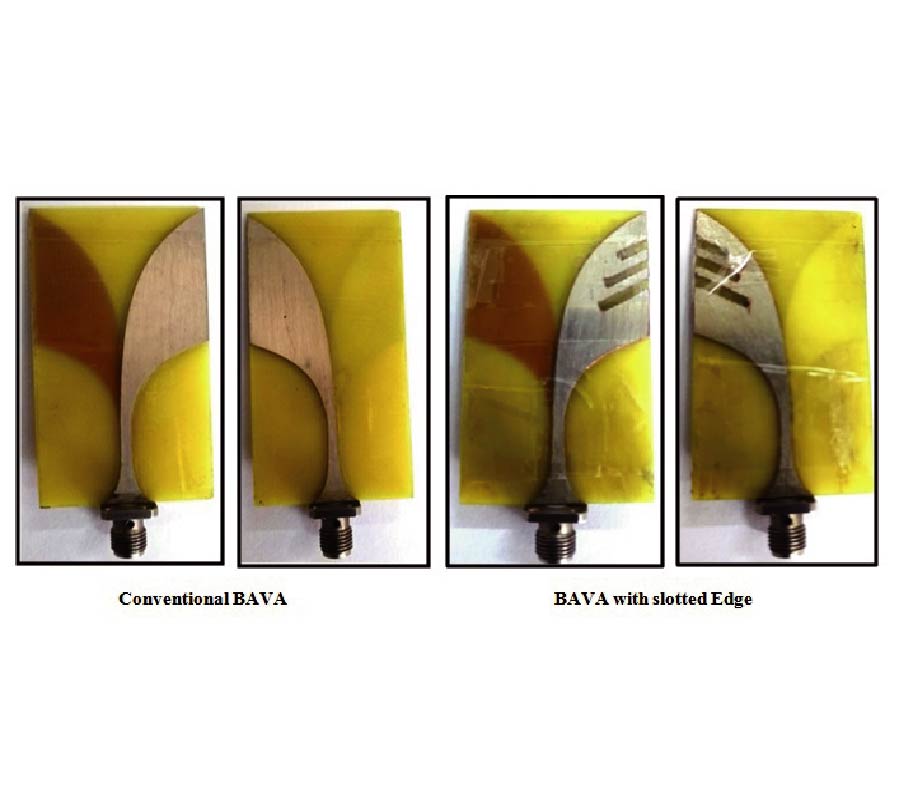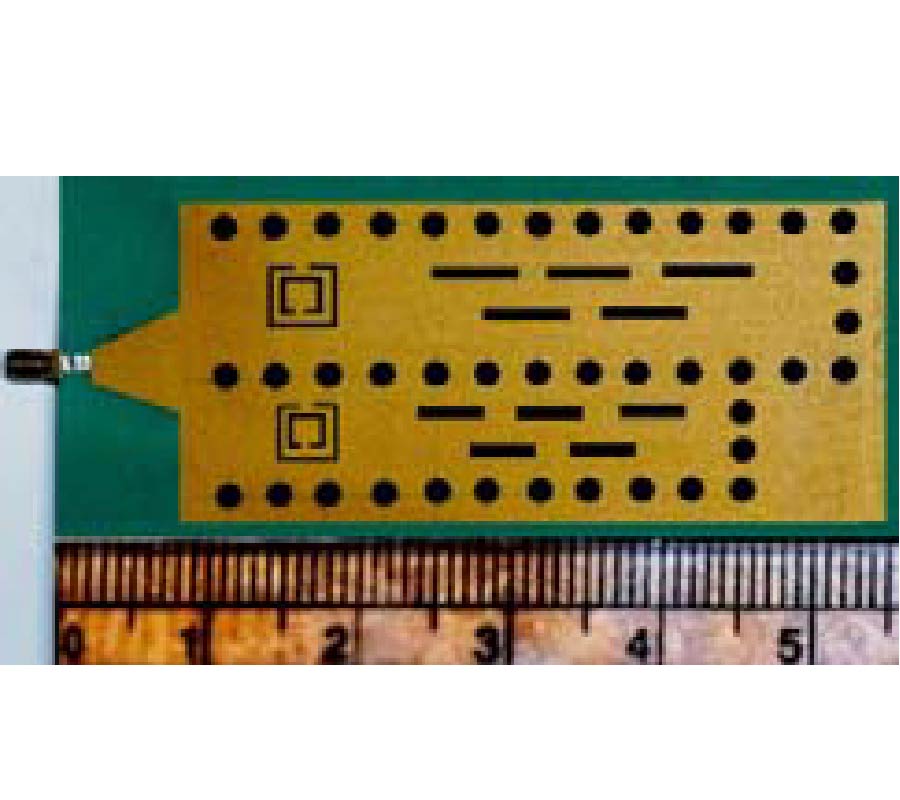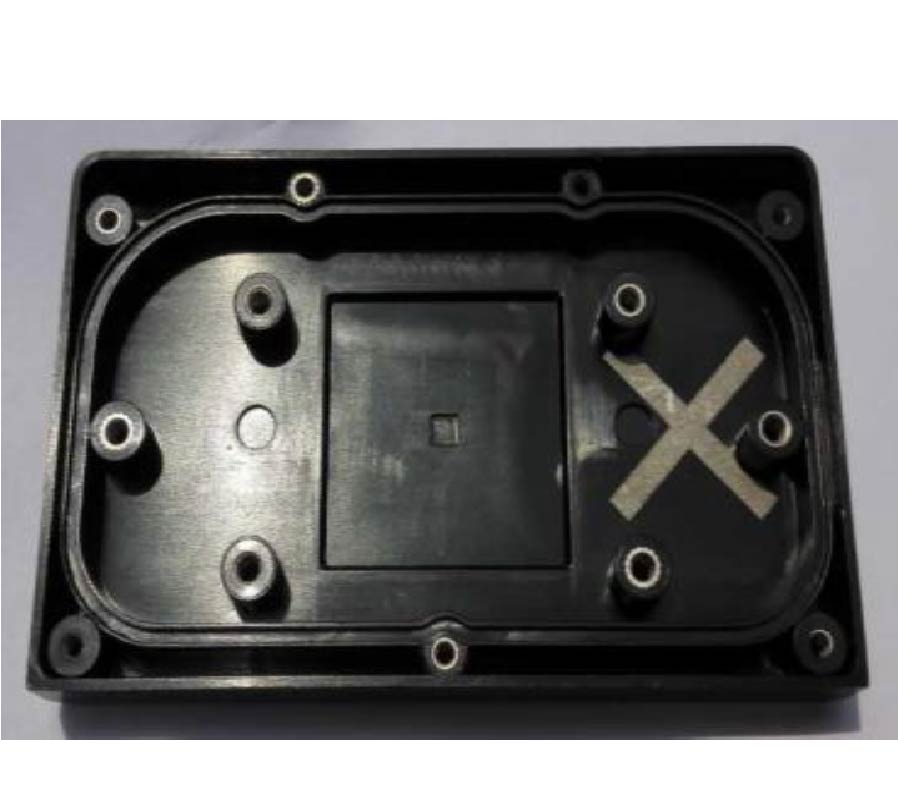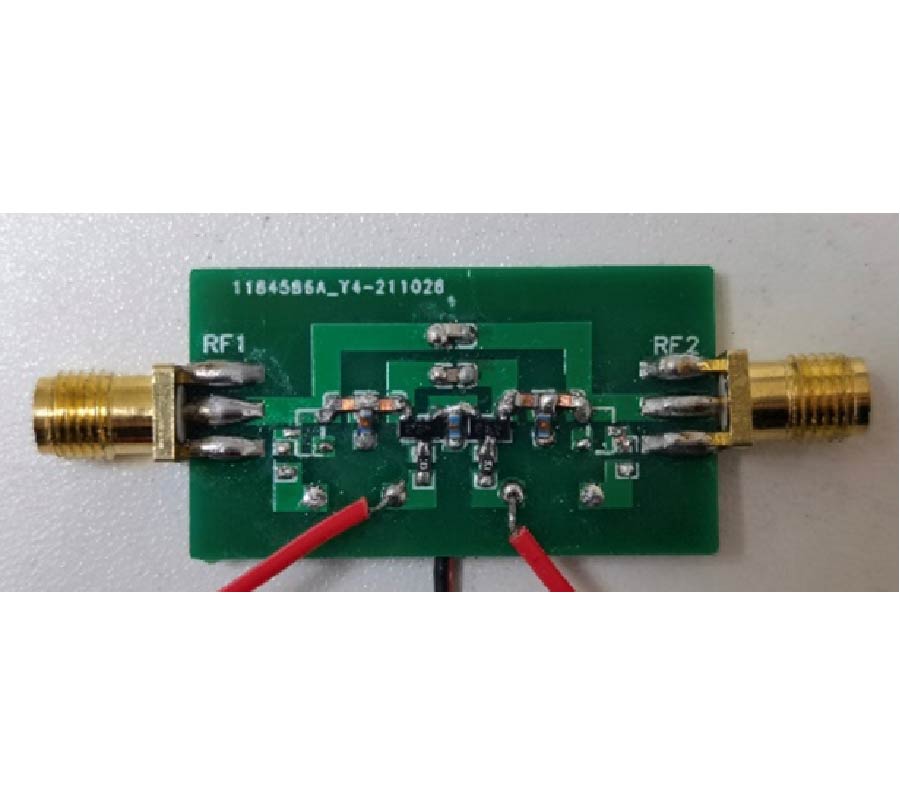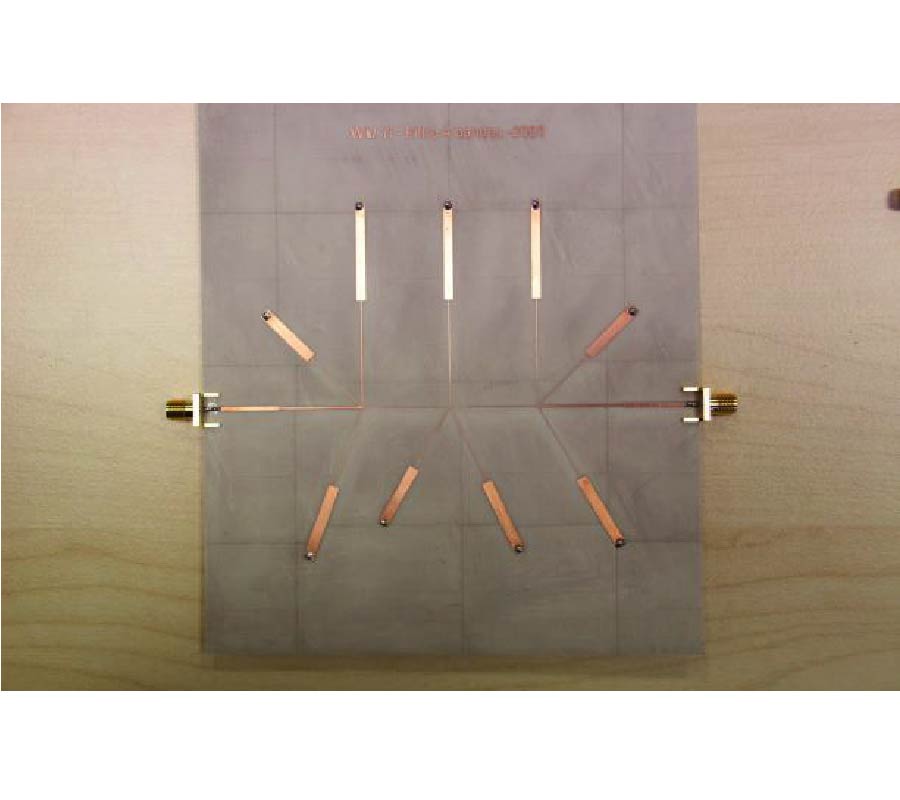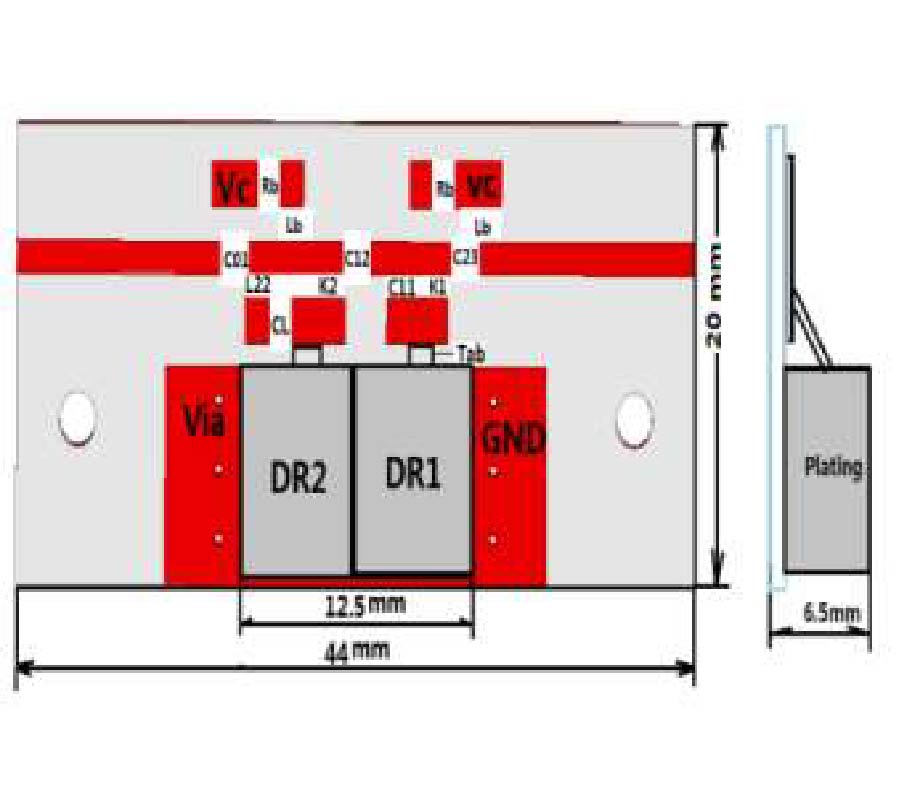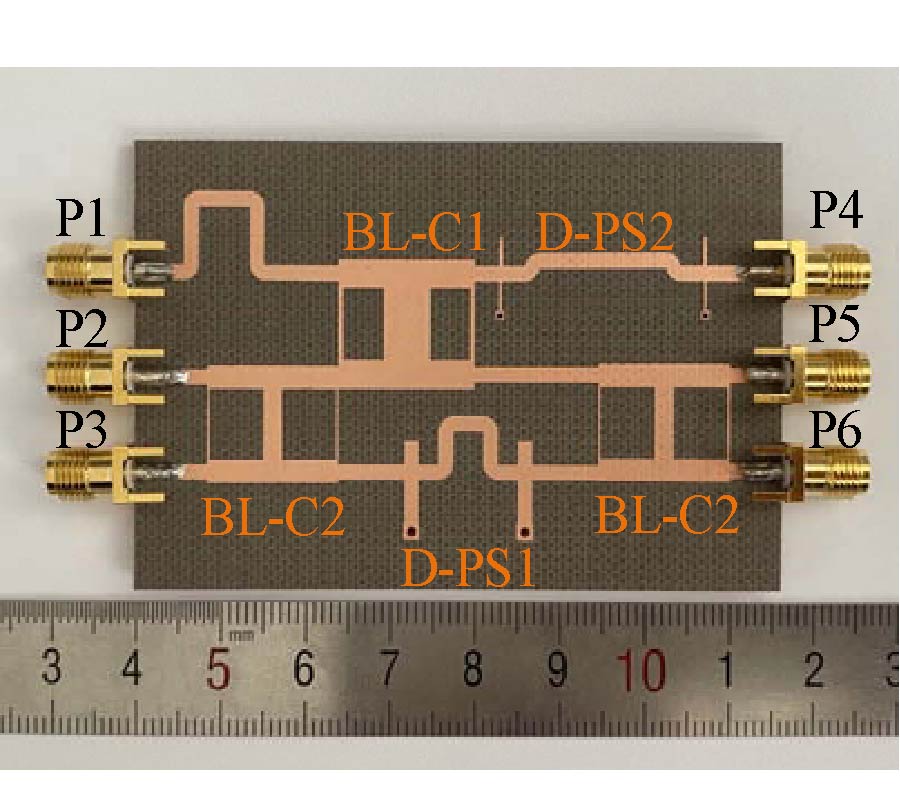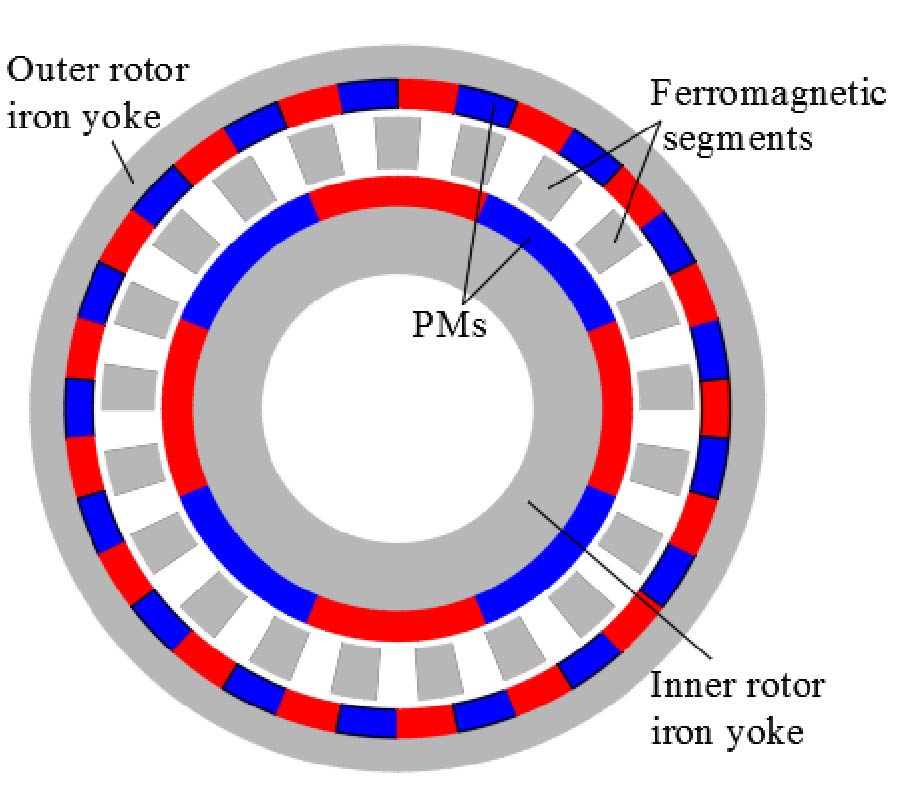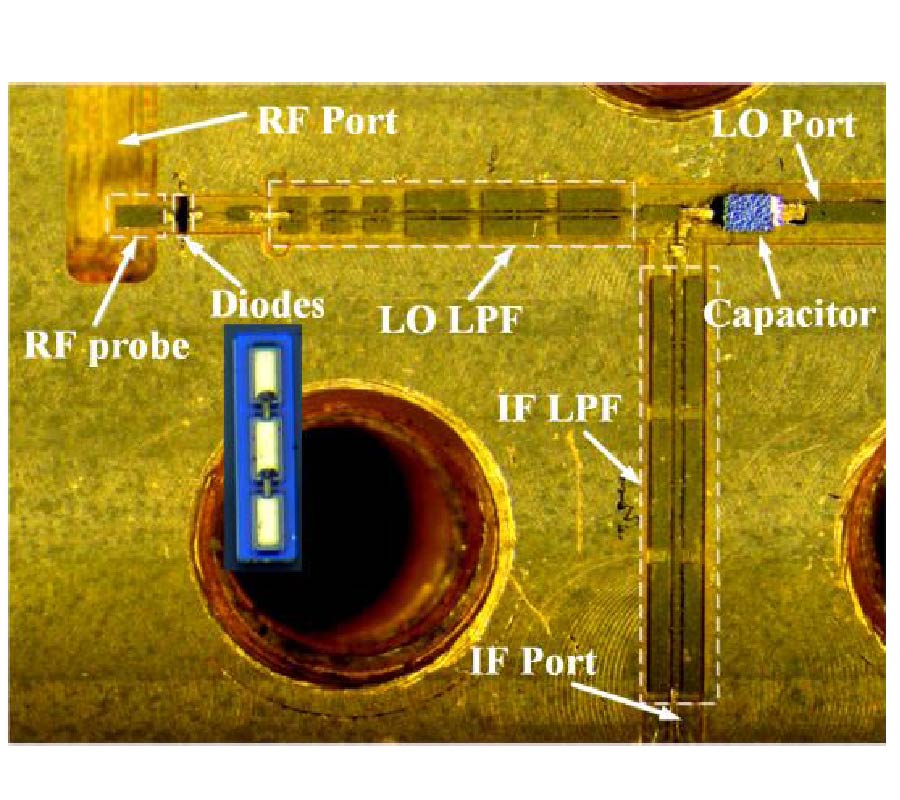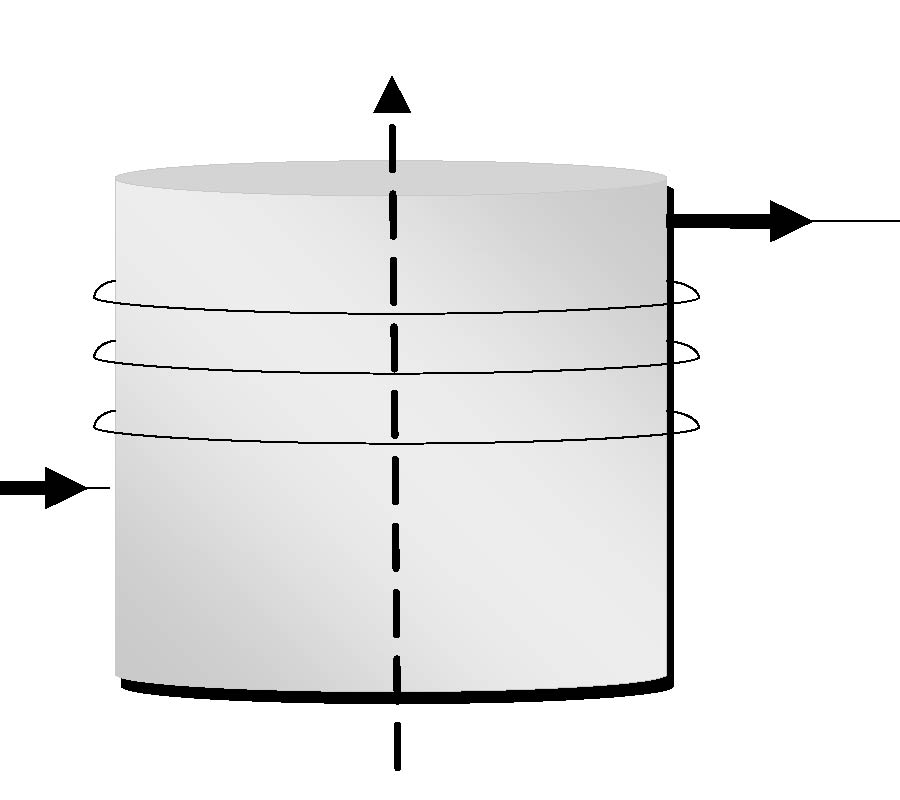A Novel Switchable Dielectric Bandpass Filter with Reconfigurable Transmission Zeros
Liangzu Cao
,
Di Deng
,
Shuai Wu
,
Jun-Mei Yan
and
Lixia Yin
This paper proposes a new method to produce and reconfigure transmission zero(s) (TZ(s)). The TZs are constructed by using lumped elements in series with dielectric resonators, which is different from conventional methods such as introducing a cross coupling between nonadjacent resonators and mixed coupling between adjacent resonators. The proposed filter consists of two dielectric resonators, a capacitor, an inductor, two PIN diodes, etc. Two PIN diodes are used as switches to realize reconfigurable TZ(s). The mechanism is analyzed theoretically. An equivalent schematic diagram is simulated by using ADS software. The simulated results show that the structure can realize four response states, i.e., no TZ in the stopband, one TZ in the lower stopband, one TZ in the upper stopband, and two TZs in both sides of the stopband of the filter, respectively. The dielectric resonators (DRs) were made of dielectric ceramics with high dielectric constant of about 92. The filter was fabricated on a dielectric substrate and measured by using a vector network analyzer and double regulated DC power supply.
